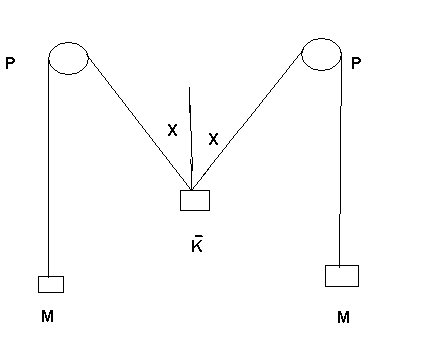Shweta_S
Member level 3
Hi,
In the fig attached Two mass M passes through Pulley
The Mass M moves with velocity u
What is the velocity of Mass K
Please provide explnation
Thanks[/img]
In the fig attached Two mass M passes through Pulley
The Mass M moves with velocity u
What is the velocity of Mass K
Please provide explnation
Thanks[/img]
